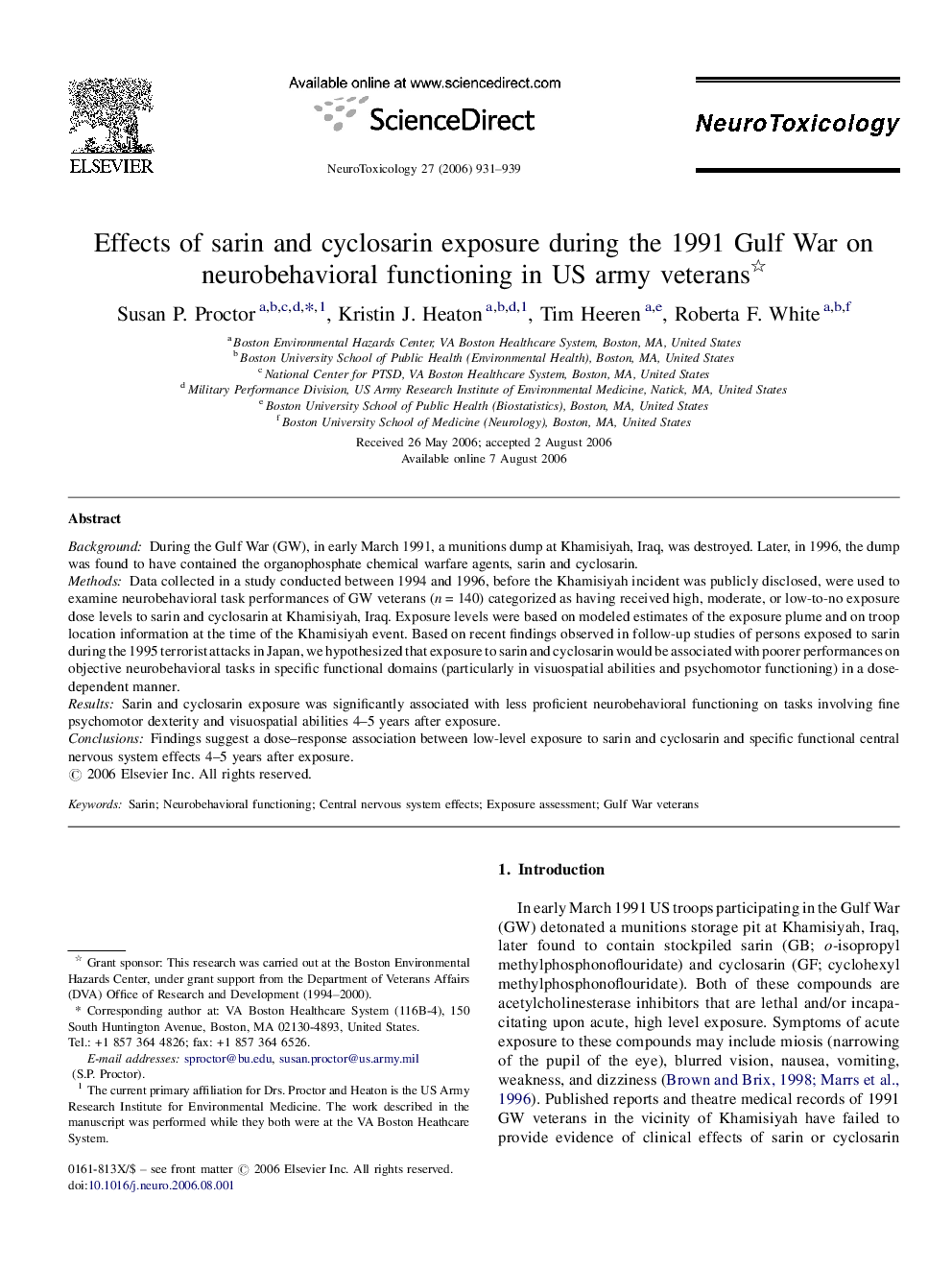| Article ID | Journal | Published Year | Pages | File Type |
|---|---|---|---|---|
| 2590517 | NeuroToxicology | 2006 | 9 Pages |
BackgroundDuring the Gulf War (GW), in early March 1991, a munitions dump at Khamisiyah, Iraq, was destroyed. Later, in 1996, the dump was found to have contained the organophosphate chemical warfare agents, sarin and cyclosarin.MethodsData collected in a study conducted between 1994 and 1996, before the Khamisiyah incident was publicly disclosed, were used to examine neurobehavioral task performances of GW veterans (n = 140) categorized as having received high, moderate, or low-to-no exposure dose levels to sarin and cyclosarin at Khamisiyah, Iraq. Exposure levels were based on modeled estimates of the exposure plume and on troop location information at the time of the Khamisiyah event. Based on recent findings observed in follow-up studies of persons exposed to sarin during the 1995 terrorist attacks in Japan, we hypothesized that exposure to sarin and cyclosarin would be associated with poorer performances on objective neurobehavioral tasks in specific functional domains (particularly in visuospatial abilities and psychomotor functioning) in a dose-dependent manner.ResultsSarin and cyclosarin exposure was significantly associated with less proficient neurobehavioral functioning on tasks involving fine psychomotor dexterity and visuospatial abilities 4–5 years after exposure.ConclusionsFindings suggest a dose–response association between low-level exposure to sarin and cyclosarin and specific functional central nervous system effects 4–5 years after exposure.
